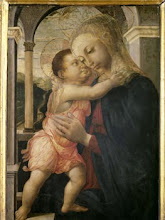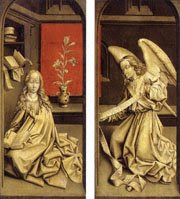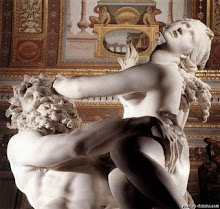




 The Sistine Chapel was the official private chapel of the popes, where the Conclave, the body which elected a new pope, also met. The rebuilding of St Peter's made it necessary for other high-level ceremonies to be held in the Chapel. Pope Sixtus IV della Rovere, the uncle of Julius II, had had the Sistine Chapel built, and had commissioned the leading artists in Florence in the late 15th century to adorn it with episodes from the lives of Christ and Moses. He also had imitation tapestries showing the della Rovere coat-of arms painted.
The Sistine Chapel was the official private chapel of the popes, where the Conclave, the body which elected a new pope, also met. The rebuilding of St Peter's made it necessary for other high-level ceremonies to be held in the Chapel. Pope Sixtus IV della Rovere, the uncle of Julius II, had had the Sistine Chapel built, and had commissioned the leading artists in Florence in the late 15th century to adorn it with episodes from the lives of Christ and Moses. He also had imitation tapestries showing the della Rovere coat-of arms painted.On important Church feast days venerable wall-hangings were hung in front of these simulated tapestries. The hangings depicted scenes of Christ's Passion, and, according to one legend, they came originally from Jerusalem. In Leo X's opinion these had become too worn and unsightly and had therefore to be replaced. The timing was clearly excellent, for this replacement gave Leo an opportunity to leave behind a visible sign of his own papacy in the most important chapel in Christendom. The coat-of arms of Leo X, commissioned from Raphael, unmistakably adorns the borders of the new tapestries.
Initially a scholar was presumably commissioned to provide a program for the cycle of tapestries, and instructed to select the scenes that would accord with the key features of the new pope's ecclesiastical policy while remaining in keeping with the decoration already there. Leo expected Raphael to interpret these themes artistically. Presumably, Raphael was commissioned to do this in late 1514 or early 1515; by June 1515 he had received an advance payment. The designs were completed by late 1516, since we have documentary evidence that the final payment was made on 20 December.
The tapestries were woven in the finest tapestry workshop of the day, that of Pieter van Aelst in Brussels. One tapestry was completed by 1517, and seven tapestries were ready to be hung in the Sistine Chapel for the Christmas festivities of 1519. Three others must have arrived shortly before Leo's death in 1521, for the inventory made just after his death lists a total of ten tapestries. During the Sack of Rome in 1527, these works were stolen, and were not returned until the 1550s. Seven of the cartoons - designs drawn to scale - are in the Victoria and Albert Museum, London. The tapestries themselves, all woven by Pieter van Aelst, are now in the Vatican Museums.
The tapestries recount stories from the Acts of the Apostles. Four scenes depict scenes from the life of St Peter. These are The Handing-over of the Keys; The Miraculous Draught of Fishes; The Healing of the Lame Man; and The Death of Ananias. The other six tapestries illustrate scenes from the life of St Paul. They are: The Stoning of St Stephen, which depicts an event St Paul ordered; The Conversion of St Paul; The Blinding of the Sorcerer, Elymas; The Sacrifices in Lystra; St Paul in Prison; and St Paul Preaching in Athens. St Peter and St Paul were both martyred in Rome, a fact that substantiated and legitimated the choice of this city as the seat of the papacy. Leo X was using the program of the tapestries to demonstrate this, and thus to assert that ecclesiastically his immediate predecessors had been right to return to Rome after the so-called Babylonian Captivity in Avignon.
In the task he had set himself Raphael was facing a double challenge. First, he was well aware how important this project was to Leo X. Secondly, he felt overshadowed by Michelangelo's Sistine ceiling, by which he knew he would be measured as an artiSt Michelangelo had achieved impressive and in some cases extreme colour effects.
Raphael remembered his own pictorial effects, as demonstrated in the frescoes of the Stanza di Eliodoro. In his designs he staked everything on the atmospheric effects of the light and colour, enlivened by contrasts and delicate nuances. In this respect, however, the final outcome was a failure, in that he had over-estimated the technical potential of tapestry weaving. All the same, the tapestries were an enormous success when shown in the Sistine Chapel in 1519.




























.jpg)


.jpg)











